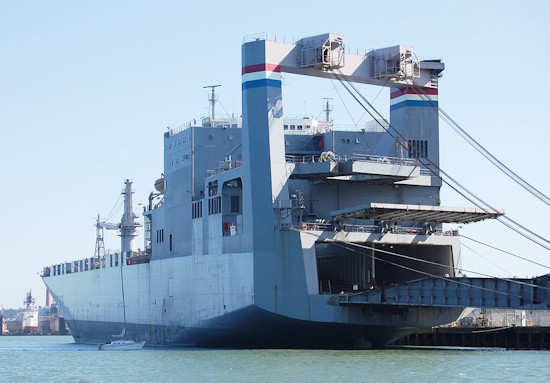
Roll-on/Roll-off (RoRo) ships, recognized for their unique design allowing vehicles to roll on and off the vessel, revolutionized maritime transport by offering remarkable efficiency and versatility. These ships have been pivotal in streamlining the shipping process, significantly reducing loading and unloading times compared to traditional cargo vessels. However, while RoRo ships offer numerous advantages, there are important safety and operational concerns that must be acknowledged. In this article we will go over those problematic areas of concern.
Stability Issues
The stability of RoRo ships is influenced by their unique design. These vessels have large, open decks to accommodate vehicles, which are often stacked on the upper decks, while the accommodations for crew and passengers are placed even higher. This design leads to a high center of gravity, which can compromise the ship’s stability.
- Impact of Cargo Shifts: In RoRo ships, cargo shifts can significantly affect stability. Since cargo (like cars, trucks, or heavy machinery) is not always evenly distributed, any movement or shift, especially in rough seas, can lead to dangerous listing or even capsizing. This risk is exacerbated in older vessels where cargo securing methods may not meet current standards.
- Hull Failure and Flooding: Another aspect is the integrity of the hull. In older vessels, hull weaknesses due to corrosion or fatigue can lead to water ingress. If flooding occurs, especially in lower cargo decks, it can rapidly destabilize the vessel. This risk is compounded by the ship’s design, which may not efficiently compartmentalize and isolate flooded areas, leading to a quick loss of buoyancy and potential capsizing.
High Freeboard
RoRo ships, especially those carrying cargo, have a high freeboard, which is the distance from the waterline to the upper deck. This design feature can become a liability in certain conditions.
- Risk during Listing: If a RoRo ship begins to list (tilt to one side), the high freeboard can become a problem. The listing can cause the cargo access doors, which are close to the waterline, to become submerged. This is particularly risky for ships in rough seas or those that have already experienced stability issues.
- Water Ingress and Capsize Risk: Submersion of cargo doors can lead to rapid water ingress. Once water starts flowing into the cargo decks, the situation can quickly escalate, drastically reducing the ship’s stability and increasing the risk of capsizing. This issue is particularly pertinent in older RoRo vessels where door sealing mechanisms may have deteriorated.
Vulnerability of Cargo Access Doors
The design of some RoRo ships integrates the cargo access door as part of the ramp system. This feature, while useful for cargo operations, introduces several risks.
- Structural Weaknesses: These doors are structurally complex and can become points of weakness, especially in older ships. Prolonged use, exposure to marine environments, and mechanical stresses can lead to wear and tear, compromising the door’s integrity.
- Risk during Listing or Damage: In situations where the ship lists, the alignment of these doors can be compromised, potentially allowing water to enter. Additionally, if these doors are damaged or fail to close properly, they pose a significant risk of water ingress, which can lead to flooding of the cargo decks and affect the ship’s stability.
Lack of Bulkheads
In older RoRo ships, the absence or insufficiency of transverse bulkheads can be a significant safety concern.
- Watertight Integrity: Bulkheads are crucial for maintaining the watertight integrity of a ship. In older RoRo vessels, the lack of adequate transverse bulkheads means that there are fewer compartments to isolate water in the event of hull breaches or flooding. This increases the risk of water spreading rapidly throughout the vessel, compromising its buoyancy and stability.
- Fire Containment: Apart from water ingress, bulkheads also play a vital role in containing fires. In the absence of sufficient bulkheads, a fire can spread more quickly across the open spaces typical of RoRo designs. Older ships may not have the advanced fire suppression systems found in newer vessels, making them more vulnerable in case of a fire outbreak.
Location of Life Saving Appliances (LSA)
The positioning of life-saving appliances on RoRo ships is another concern, particularly in older models.
- High Placement: Lifeboats and life rafts on RoRo ships are often positioned high above the main deck. This design is necessary due to the ship’s structure and freeboard but can pose challenges during an emergency.
- Difficulties in Launching LSAs: In situations where the ship is listing or in rough seas, launching lifeboats and rafts from a significant height becomes more complicated and dangerous. This can delay evacuation and increase risks to passengers and crew, especially if the ship is unstable or in adverse weather conditions.
Adverse Weather Conditions
RoRo ships, due to their design features, are particularly susceptible to the effects of rough weather.
- Impact on Stability: These vessels have large, open decks and a high center of gravity, which can be significantly affected by heavy rolling and pitching in rough seas. The stability of RoRo ships can be severely compromised in such conditions, especially if the cargo is not adequately secured or distributed.
- Risk of Capsizing: In extreme weather, the combination of high freeboard and large open spaces can lead to water accumulation on decks and subsequent flooding. This can exacerbate listing and potentially lead to capsizing, especially in older vessels that may lack advanced stabilizing technology.
Cargo Stowage Issues
The process of stowing cargo like trailers and cars in RoRo ships is critical for maintaining the ship’s stability.
- Impact of Improper Stowage: When cargo is not properly secured, it can shift during transit, especially in rough seas. This shift in cargo can drastically affect the vessel’s center of gravity. In severe cases, it can lead to a list (tilt) or even capsize. The risk is higher in older RoRo ships where stowage and securing methods may not be as advanced as in modern vessels.
- Securing Cargo: It’s essential that all cargo is secured according to the ship’s cargo securing manual, which is designed specifically for that vessel. This includes using lashings, chocks, and other securing devices in the correct manner. Failure in any of these areas can lead to the cargo becoming unsecured and shifting.
Challenges in Cargo Loading
Loading cargo onto a RoRo ship presents its own set of challenges, which can impact the vessel’s stability and safety.
- Sequential Loading Difficulties: Ideally, cargo should be loaded in a manner that ensures even distribution across the vessel. However, in reality, cargo often arrives at the terminal at different times, and the ship may have limited time at port. This can result in cargo being loaded in an order that does not optimally distribute weight.
- Uneven Cargo Distribution: When cargo is not evenly distributed, it can lead to an imbalance in the ship’s stability. This is particularly problematic for RoRo ships due to their large, open decks and high center of gravity. Uneven distribution can exacerbate the effects of rolling and pitching in rough seas, increasing the risk of capsizing.
- Managing Cargo Arrival and Stowage Plans: To mitigate these risks, careful planning and management of cargo arrival times and stowage plans are essential. This may involve coordination with port authorities and cargo handlers to ensure cargo is loaded in a sequence that maintains the ship’s stability.


